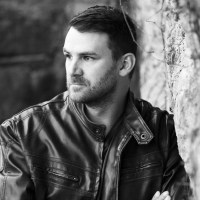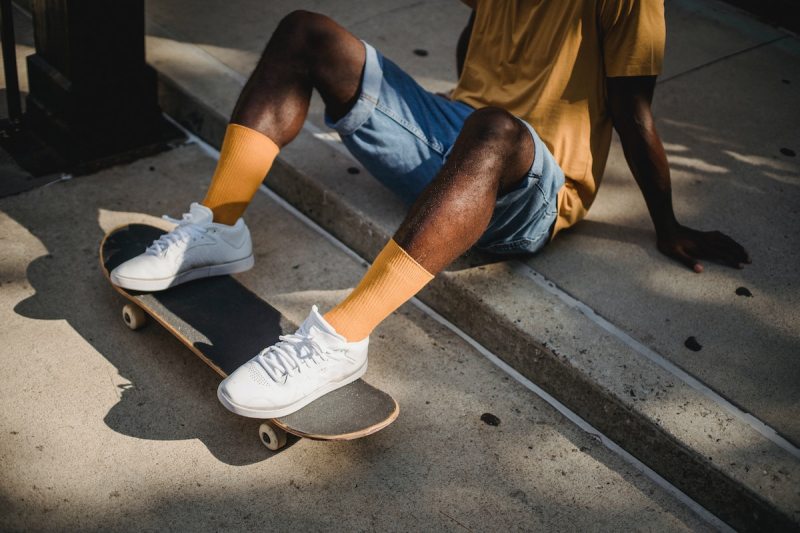
Skate style has been at the forefront of fashion for years now, and for a good reason: There’s something about the carefree cool of the skate world, and insiders are more central than ever to the cultural zeitgeist. Look no further than pros like British Ben Nordberg, who has been the face of Gucci and Fendi. Or pink-haired Evan Mock, who has done campaigns for Calvin Klein and Saint Laurent. No longer labeled as outcasts, skaters and their unique looks have moved up the ladder in the style world into streetwear brands.
Skaters are known to rock stylish silhouettes like tucked-in tees and baggy trousers long before they make their way onto prominent fashion designers’ runways and lookbooks. And in recent years, the two worlds have collided in significant ways. In 2018, Polo Ralph Lauren released a collection with British skate brand Palace, and a year later, Louis Vuitton teamed up with the legendary Supreme to release a capsule of high-end tees, skate decks, and leather goods.
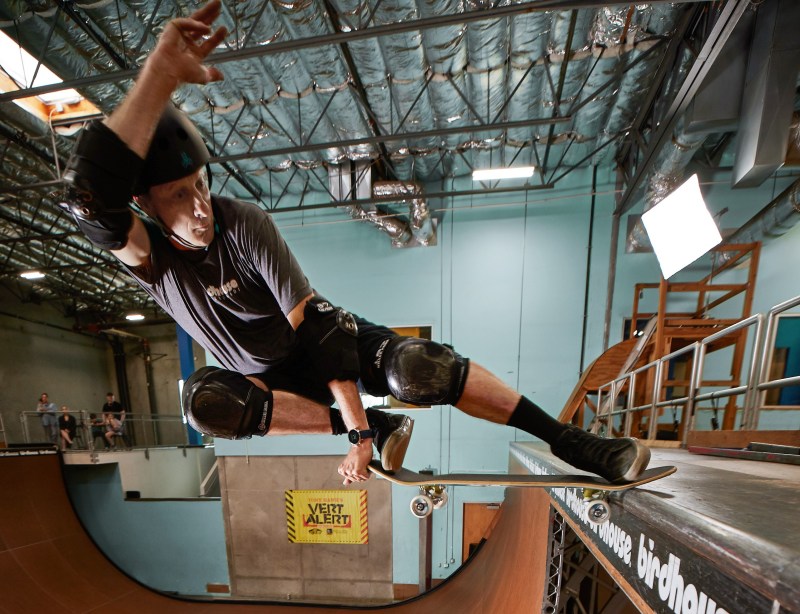
What makes a skater brand?
When it comes down to it, skate clothing is a very specific niche that allows skaters to find unity when they feel it nowhere else. When skating became a popular activity of the outsiders, they wore leather jackets, studded belts, and T-shirts representing bands that adults wouldn’t approve of. Their clothing resembled their rebellious nature. Today, that same rebellious nature comes through, even though Tony Hawk started a movement that brought skateboarding into the mainstream. The brand’s rebellious nature encouraged skaters to express their authentic selves, regardless of the outcast status they often attain.
Authenticity is a word that gets thrown around with brands these days. Regarding skate style, we’ve put together a list of the most influential clothing brands that have devoted their existence to living, breathing, and supporting their communities of pros. Most of the brands on this list were founded in the do-it-yourself era when local skate crews continued to produce their own gear. At the end of the day, the secret to pulling off skatewear is less about having brand-new gear and more about moving through the world with a carefree attitude.
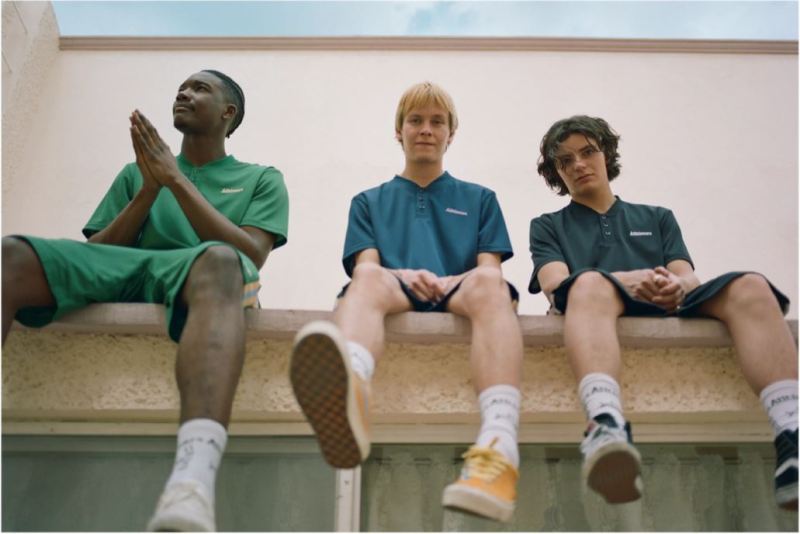
Alltimers
Alltimers was founded by pros Rob Harris and Pryce Holmes in New York City. The duo clashes downtown skate culture with ironic extravagance, as shown in their cocktail lounge-esque martini glass logo, a reference to the skate ethos of rebellious vitality. You’ll see essentials like snapbacks and parkas mixed with more playful pieces and paradoxical messaging, like a fine china box with “You Deserve It” written in script.
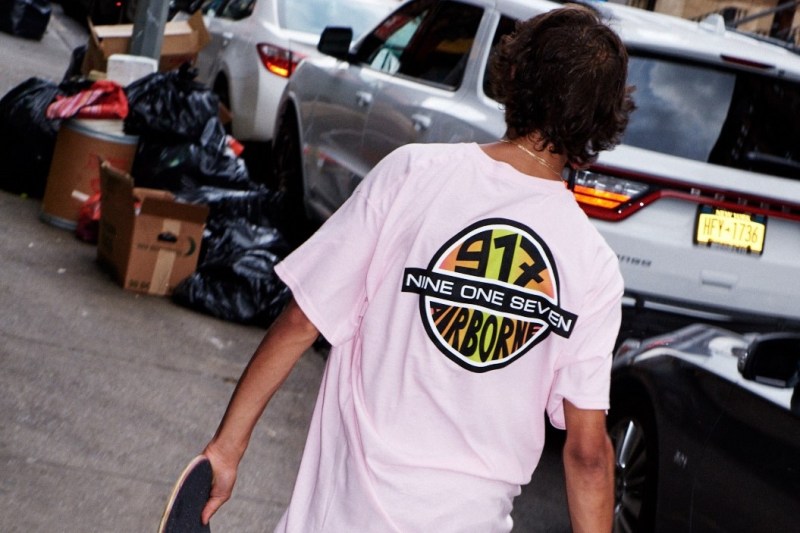
Bianca Chandan/Call Me 917
Shortly after turning pro and landing a handful of sponsorship contracts, Alex Olson launched his clothing brand, Bianca Chandon, and skate company, Call Me 917. Their creation filled a creative void in the market. Olson describes 917 as a core skate brand working with a selective, limited run of skate shops to keep the brand true to its misfit youth mystique roots. Bianca and 917’s tight-knit team of pros and partners offer a glimpse of an insiders-only club, and equally, rocking a “Lover” piece is the ultimate IYKYK.
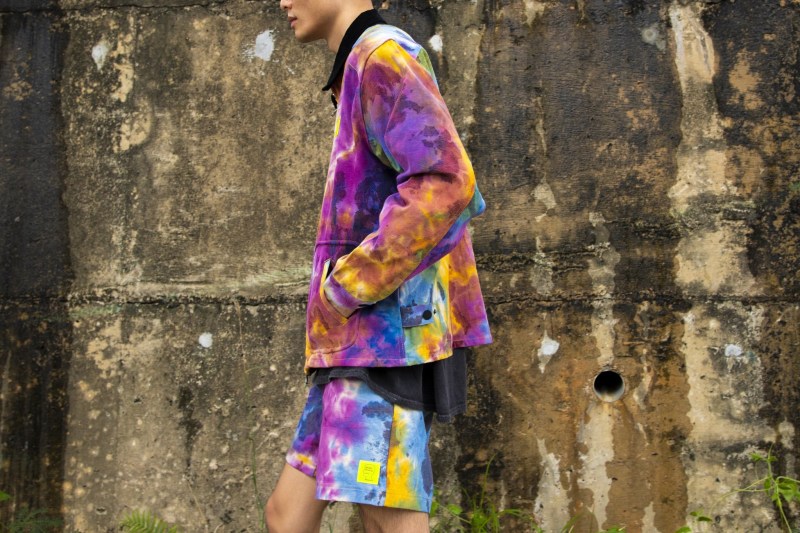
Brain Dead
Brain Dead is a global creative collective of artists and designers whose disruptive approach comes from skateboarding, underground comics, and the spirit of a subculture. You’ve likely seen the brand’s outlined logo. They enjoyed collaborations with everyone from Converse to French clothing brand, A.P.C. Brain Dead offers skate essentials like tees, hoodies, and sneakers. They are best known for their hard-to-miss graphics.
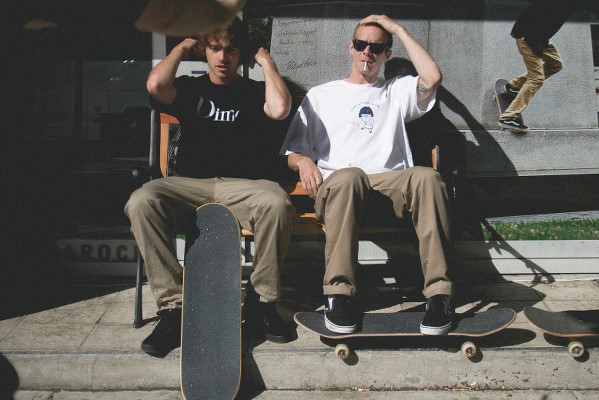
Dime
Dime MTL emerged as one of the Montreal skate scene’s greats by pros Antoine Asselin and Phil Lavoie. The Dime Glory Challenge is infamous for its insane list of pro skaters from around the globe who annually compete in a series of “artfully curated challenges.” Their collections are more subtle classics than over-the-top graphics: think super clean twill jackets, terry crews, and Canadian necessity beanies. Dime continues to be one of the brands at the forefront of classic and cool.
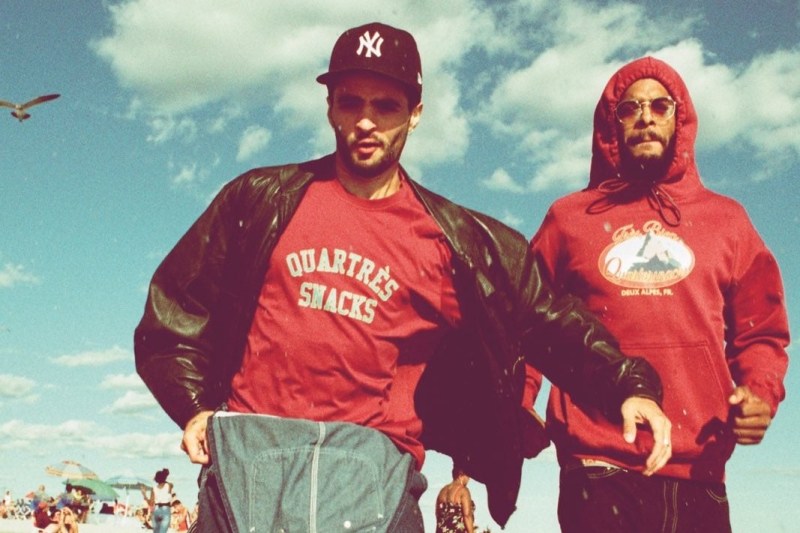
Quartersnacks
Quartersnacks kicked off in 2005 as the holy grail for skaters in New York City: it released the best skate spots, shared highlight reels of local talent, and gave a rundown of the city’s skate scene. Over the past fifteen years, it evolved into its own editorial empire and, inevitably, its own brand. While their merch is generally straightforward graphic hoodies, hats, and tees, each piece pays homage to The Big Apple, where Quartersnacks laid its roots.
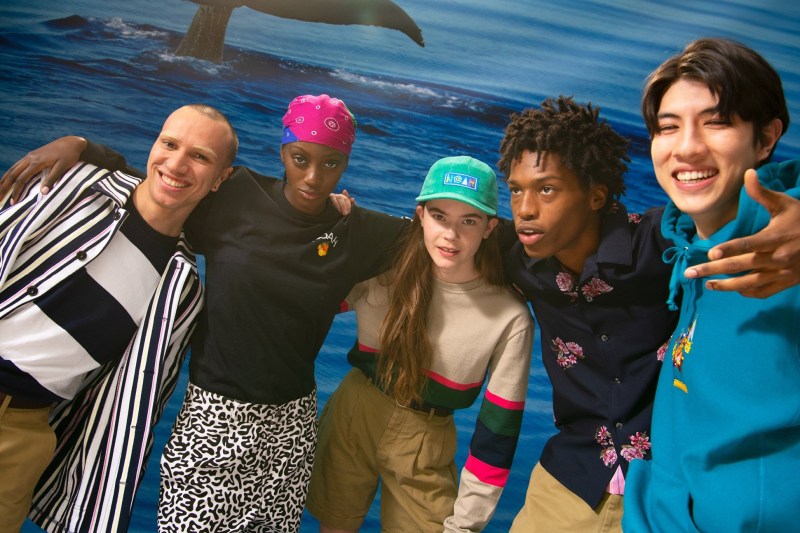
Noah
Brendon Babenzien founded the Noah flagship store in Soho, New York. He built it with a free-thinking vision at the heart of the local skate, surf, and music communities. While challenging partners and customers to engage with the world around them actively, Noah has collaborated with legends like Keith Haring, Earth Wind and Fire, and Vans. The stark navy and white logo and red cross are synonymous with quality and conviction.
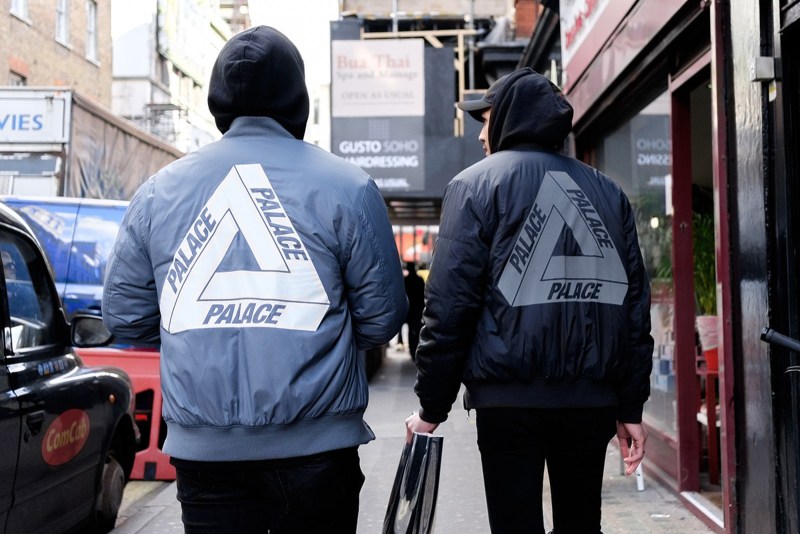
Palace
Palace is a London-based skate shop and clothing brand founded by Levent Tanju in 2009. Lev and his squad, the Palace Wayward Boys Choir, heavily influenced the London and global skate scenes for years. While Palace is a skate company at its core, it has incorporated classic British references like tracksuits, shell suits, and windbreaker jackets into its DNA. The brand’s Penrose triangle logo is the work of legendary London illustrator Fergus “Fergadelic” Purcell and is an unmissable symbol in streetwear today.
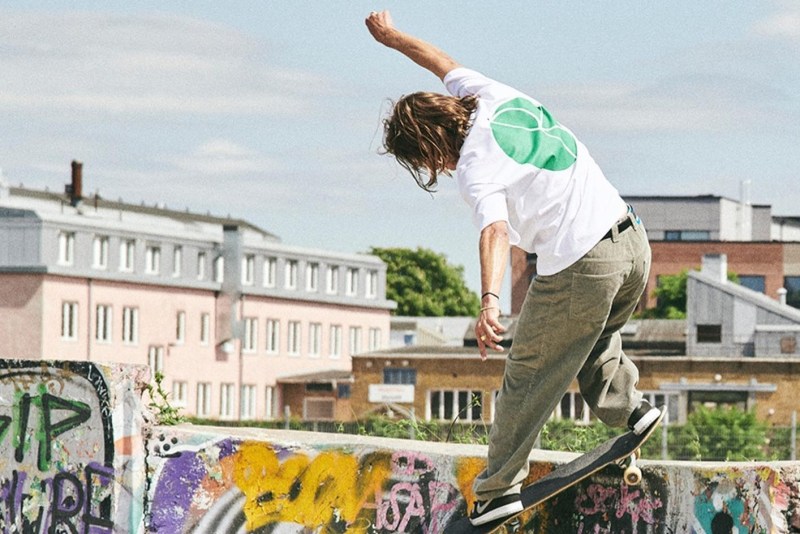
Polar
Unlike most American brands on this list, Polar started in Malmö, Sweden, before emerging as a global skating superpower. Against the odds, founder Pontus Alv evolved as one of the most respected and creative skaters from a town that didn’t have much of a skate scene and snowed for nearly half of each year. The brand’s signature nostalgic-inspired and oversized silhouettes like the “Karate Pants” and “Big Boi” jeans and tees have trickled down as streetwear trends elsewhere. Polar continues to be one of the brands setting the bar for sartorial skatewear.
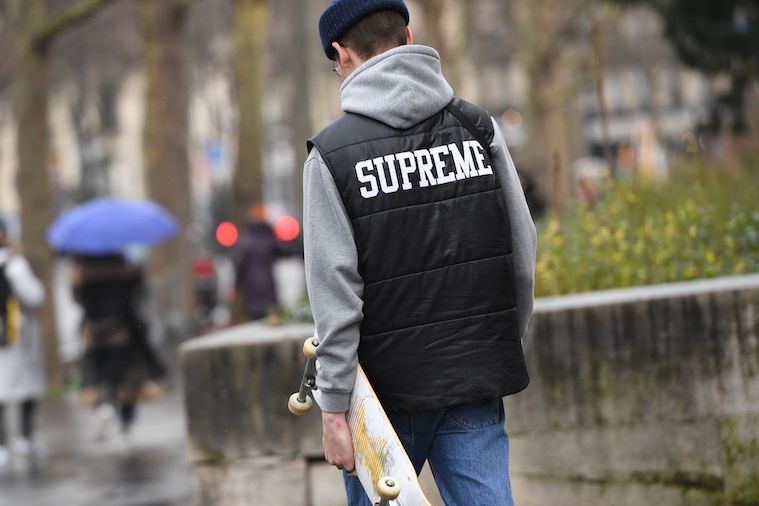
Supreme
If there is one brand that paved the way for skateboarding into the style sphere, it is, without a doubt Supreme. Founder James Jebbia opened the Supreme’s flagship store on Lafayette Street in New York in 1994 and hasn’t looked back. It’s known for its Thursday drops and infamous lines around the block. The brand has collaborated with pop culture movers and shakers, including Takashi Murakami, Damien Hirst, and Louis Vuitton. Supreme’s red box logo has gone down as one of the most iconic brandings plays: while often mimicked, it is never missed.
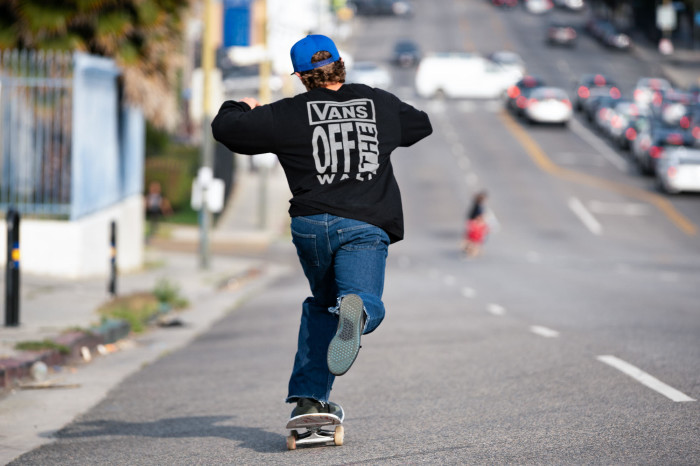
Vans
Vans started in 1966 as brothers Paul and Jim Van Doren opened their doors as the Van Doren Rubber Company. It uniquely manufactured shoes in Anaheim, California, and released them for sale the same day. Early 70s skaters were keen on deck shoes now known as The Authentic for their rugged canvas and trademarked sticky double rubber underlays that protect the longevity of each pair. Today, the brand’s iconic Old Skool and signature side stripe can be seen equally in skateparks and street style. For the past fifty-five years, Vans has been synonymous with a laid-back, So-Cal style that has transcended the West Coast to become an authentic global skate brand.
You don’t have to learn to skate to be rebellious. You don’t have to wear skate clothing to express your inner outcast. But what you will find in skater wear is a community. A group of fellow outsiders who refuse to blend in with the rest of the world and instead choose to stand out in their own version of fashion.
